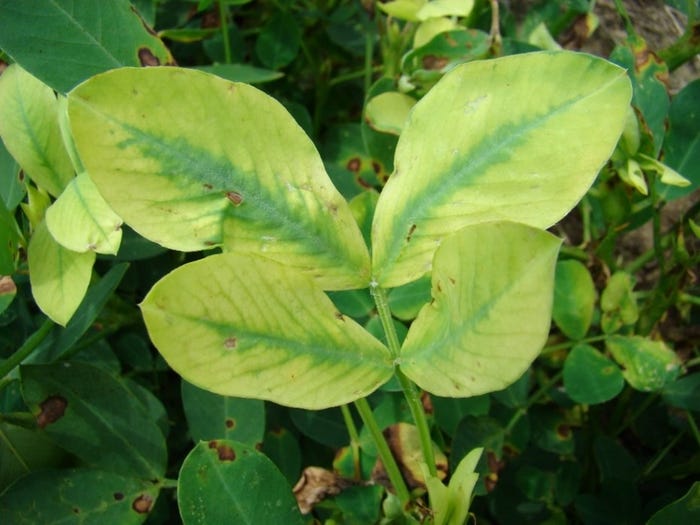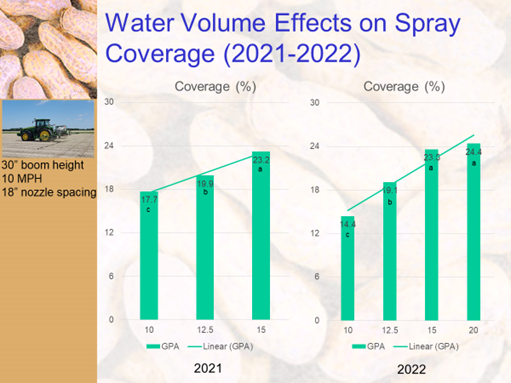January 23, 2024

At a Glance
- One of the most common questions that I like to ask a grower is “How do you sleep at night?”
For the most part, the 2023 Georgia peanut crop is in the warehouse. The UGA Peanut Team Captain, Dr. Scott Monfort, recently informed me that Georgia peanut growers harvested around 770,415 acres with a state average yield of 4,043 pounds per acre. In every year, peanut growers face numerous challenges that can influence final yields.
As I think about what happened to the 2023 peanut crop and what might happen in 2024, the following are some weed science challenges I think need to be on everybody’s radar:
Self-inflicted Problems: I spend lots of time looking at problems such as off-target movement, sprayer contamination, mixing/jug errors, herbicide carryover look-alikes, and true herbicide carryover (Figure All of these challenges can be mitigated by paying closer attention to detail. In the military, this is called “situational awareness”. I encourage you to look that term up when you get a chance.
Perennial Weeds: Peanuts should not be planted into fields with known populations of perennial weeds such as horsenettle, maypop passionflower, alligator weed, and goldenrod. Simply put, perennial weeds cannot be effectively controlled in peanut. Avoidance is the best option here.
Timing, Timing, Timing: I have been around South Georgia now for 25 years so most have heard me comment on how critical timing is especially when talking about POST herbicide applications. It’s a well-known weed science fact that small weeds (≤3” tall) are much easier to control than large weeds. Over the years as farm size has increased, herbicide timing has become a more challenging issue. Don’t forget that “revenge” sprays (i.e. I have to spray something) almost never work!
Application Methods: The current trends in herbicide application are to set boom heights high, drive at NASCAR speeds, and use as little water as possible. I get it. It’s all about time and money. But when environmental conditions are not favorable and weed sizes are not ideal for optimum POST applications, these trends can often result in less coverage which could ultimately result in reduced efficacy (Figure 2).
Weather: Easy to talk about but the most difficult factor to control. Hot and dry conditions are a weed scientist’s worst nightmares. Ample moisture is required for moving residual herbicides into the weed seed germination zone (i.e. some refer to this as activation). Ample moisture also promotes active weed growth which is critical for the success of POST applications. On the flip side, excessive moisture can prevent timeliness and wash off herbicides before they have time to act. Remember June 12 to June 22, 2023 in Georgia’s peanut belt (~4-11” of rainfall).
The Future: In my 37 year weed science career, there seems to have always been another herbicide or technology on the horizon. But this is no longer the case, especially in the peanut world. The lack of new herbicide modes of action (MOA) in the peanut pipeline should have all peanuters concerned about the future evolution and management of herbicide-resistant weeds. Every peanut grower must know what herbicide MOA’s are being used and protect them at all costs.
One of the most common questions that I like to ask a grower is “How do you sleep at night?” Seems almost impossible to me with all of these challenges and many more not mentioned herein. I am humbled by and grateful for their fortitude.
Even though I have been at this for a long time now, I don’t proclaim to have all the answers. But, I will keep searching for them. I look forward to visiting with you at a local UGA county crop production or weed meeting in 2024. As always, good weed hunting!

Figure 1. Peanut injury from glyphosate that most often occurs from pesticide container mishaps. Eric Prostko

Figure 2. Water volume (GPA) effects on spray coverage in Georgia. Data Source: Simmer Virk/UGA CAES.
Read more about:
HerbicideAbout the Author(s)
You May Also Like






